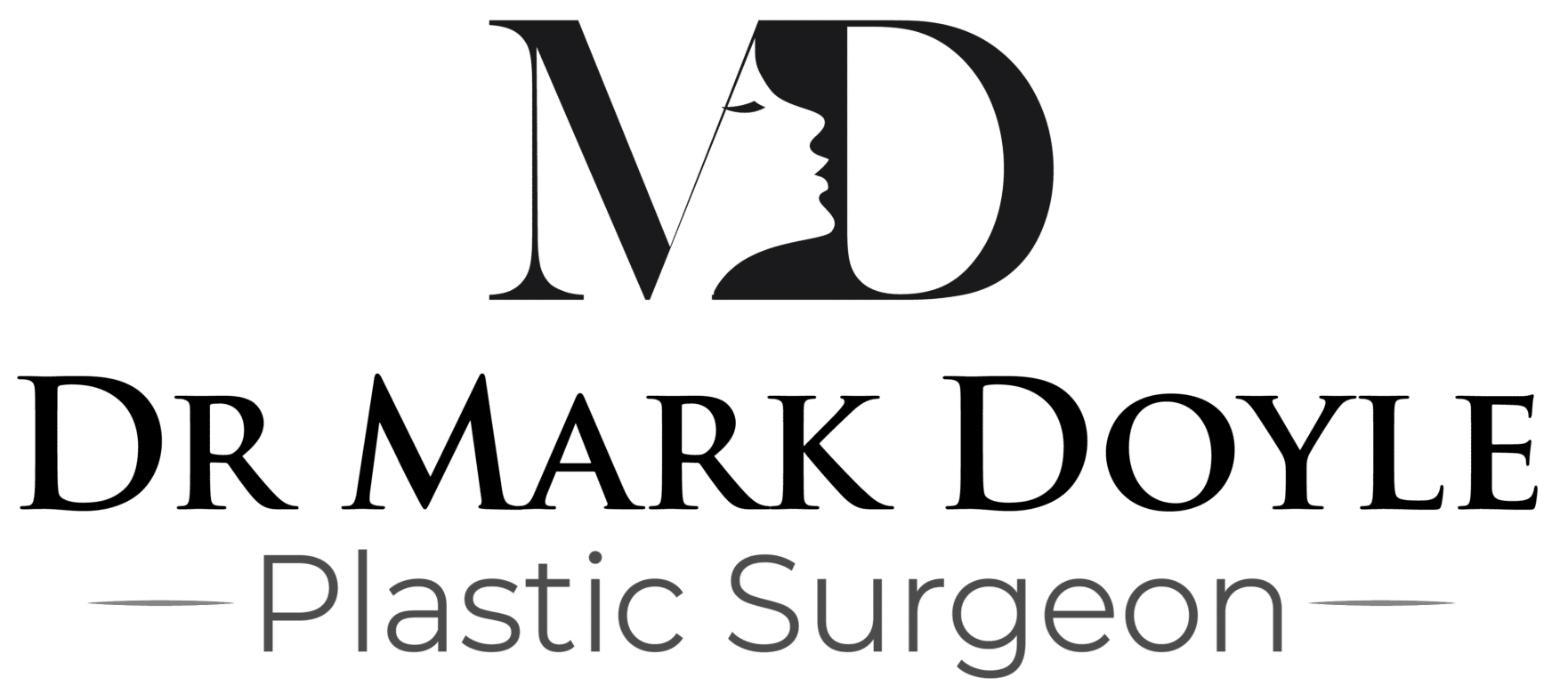What to Expect in Terms of Scarring After Plastic Surgery
All invasive plastic surgery procedures leave a scar. The size of the scar and its location depends on the type of procedure performed. In general, though, all scars will be red and raised immediately after surgery.
Scars can often be a source of concern for some. And, Dr Doyle will always recommend ways to minimise the appearance of your surgery scars. These are the things you can do to help the healing process and improve the appearance of your scars.
How to Care for Your Scars Post-Surgery
There are a number of things you can do to help your scars heal properly and minimise their appearance. These scar minimisation tips include:
- Wear sunscreen
- Keep your scars clean and dry
- Avoid exposing your incisions to direct sunlight (especially as they are healing)
- Don't wear tight clothing that rubs on your incisions
- Do not pick at your scars
Dr Doyle will give you specific instructions on how to care for your scars. He’ll also provide you with a plastic surgeon recommended scar cream and access to LED light sessions.
The Different Types of Scar Management Products Available
There are many different products available that can help improve the appearance of your scars. Your options include:
- Silicone gel sheeting
- Topical silicone gel
- Scar creams and ointments
- LED light therapy
- Skin needling
Silicone and LED light therapy have proven to be the most effective methods for treating plastic surgery scars. Remember, it’s not possible to erase scars completely. The goal of these treatments is to minimise the appearance of scars as much as possible.
The Effect of Silicone Gels on Scars
Silicone is believed to decrease inflammation and give support and protection to scars. It works as a protective barrier over your skin to allow scars to heal quicker. One study found that the use of silicone gels resulted in a noticeable improvement in the appearance of scars.
Specifically, Dr Doyle recommends the use of Strataderm and Stratamed silicone scar gels.
How LED Light Therapy Works on Scars
Red light therapy has shown to be a promising treatment for plastic surgery scars. Using precise wavelengths of light, red light penetrates tissue and encourages healing at the cellular level.
These light waves have a positive effect on human cells, creating energy and improving cell function. As a result, when exposed to red LED light, this promotes the body’s natural healing processes.
This treatment is a non-invasive treatment and requires no downtime. If you would like to book a session, please phone Dr Doyle’s clinic today.
Remember - Be Patient When Healing Your Scars!
Time is the best healer when it comes to scars. The above treatments and advice may help your scars to fade more quickly. However, it can take up to 2 years for scars to fade.
With the right treatment, you should notice the fading occurs from 6 months after surgery, up to 2 years later. The goal is always to get your plastic surgery scars to fade from a pink colour to a white tone.
About Dr Mark Doyle FRACS (Plast) – Specialist Plastic Surgeon
Dr Mark Doyle is a Specialist Plastic Surgeon with over thirty years of experience. He specialises in face lift surgery in Gold Coast and Brisbane, and also offers a range of body and breast procedures.
Dr Doyle is a fully qualified Doctor and surgeon. He has completed all required training to be a Specialist Plastic Surgeon and is driven by an committed to providing excellent standards of care.
NEXT STEPS
Do Your Research
- Read the Website and Blogs relevant to your procedure
- Read our Frequently Asked Questions
- Learn about the Risks and Complications of Surgery
- Download our Plastic Surgery Guides
- Browse Dr Doyle’s YouTube Channel
What to Bring to Your Plastic Surgeon Consultation
- Bring a friend or relative for support and discussion regarding your choices
- Take notes and read all provided information thoroughly
- Read about what to expect in your Initial Surgery Consultation
Book Your Plastic Surgery Consultation
- Get a Referral from your GP or specialist – this is required to book a consultation with Dr. Doyle.
- Email us or call on 07 5598 0988 to arrange your consultation appointment.
- Pay your $300 Consultation Fee in advance to secure your consultation.
Please contact us to arrange to book a consultation with our Specialist Plastic Surgeon or to speak with our Patient Care Advisor.
Send an enquiry form today or phone 07 5598 0988 during Clinic Hours.
–
*DISCLAIMER: All information on Dr Mark Doyle website is general and is not intended to be medical advice nor does it constitute a doctor-patient relationship. Results can vary significantly and depend on individual patient circumstances. All images on this website, unless specified as real patient images, are stock images used for illustrative purposes only. Surgery risks and complications will be covered in detail during a consultation with your surgeon. Book a consult for details regarding your cosmetic surgery procedure.
Dr. Mark Doyle AHPRA Registration: Dr Mark Doyle MED0001375519 Specialist Plastic Surgery – MBBS FRACS FRCS



